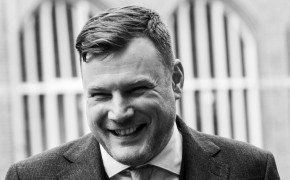Making cultural heritage more perceptible while solving water management issues during the realisation of new nature.
At the northside of Breda is a large polderlandscape called Lage Vucht. A polder is drained wetland. Until recently the use has been agricultural. Back in history, during the Dutch revolt, the Lage Vucht played an important role in the defence of Breda. The polder could be inundated to form a water defence line. The flooded area would be overseen from small fortifications (redoubts) on the Zwarte Dijk. To get the right ecosystem, the polder has to be supplied with water of low acidity. Therefore Waterakkers was constructed: a giant helophyte filter. The water has to be pumped in to the polder. Rather than just engineering a plain solution, it was decided to make the cultural and natural heritage of this area more comprehensible for visitors. In the waterredoute, a modern, land art like interpretation of a redoubt, the flow of filtered water into the polder is visibly regulated. The realisation was a good example of collaboration between waterboard, the forestry commission and the ecologists and the heritage specialists of the municipality. An external spatial designer made the design while taking care of the motives of the stakeholders. The waterredoute had to be functional, safe and lead to a better perception of heritage. Storytelling and imagineering were important parts of the process. So the design serves several purposes for different stakeholders. The practice of combining these purposes saves money and strengthens the plan as a whole.
Resources needed
Three parties were responsible for the development of the area:
-the Forestry Commission (Staatsbosbeheer)
-the waterboard (Brabantse Delta)
-the Municipality of Breda
Realisation and design: € 800.000.
Manhours (approximately): €10.000
Evidence of success
The experience of the Vuchtpolder from the Zwarte Dijk has been positively influenced.
The redoubts are now part of tourist and educational routes.
The nature reserve of the Vuchtpolder was developed to stop the declining number of meadow bird species. The results are not clear yet, but positive.
Because of the willingness of the stakeholders to think in a more integral way, the project was successful. This is an important behavioural change.
Difficulties encountered
There were discussions on functional, engineering solutions versus aesthetic and storytelling design. The challenge is to get a better understanding of each other’s incentives.
Potential for learning or transfer
The practice of making cultural heritage more perceptible while solving watermanagement issues during the realisation of new nature is transferable if we analyse the ingredients needed for success: soul, trust, quality, theatre and courage. Together they will lead to a common pride.
Please login to see the expert opinion of this good practice.
Tags: Heritage, Water, Nature








